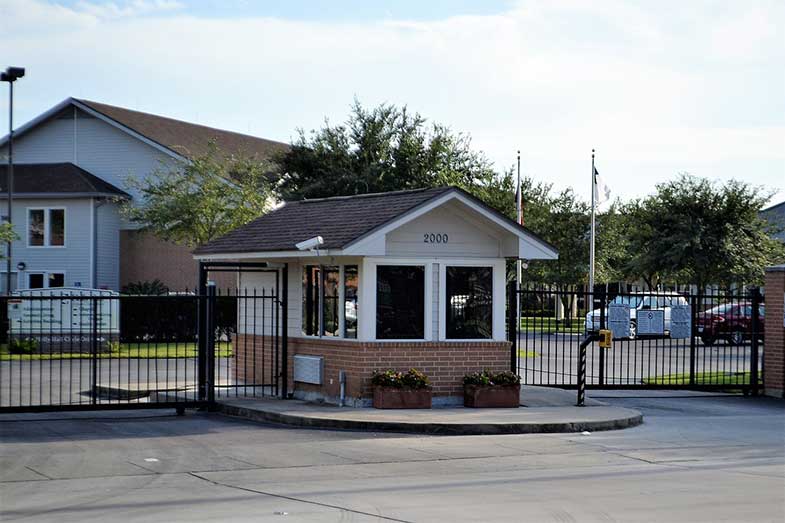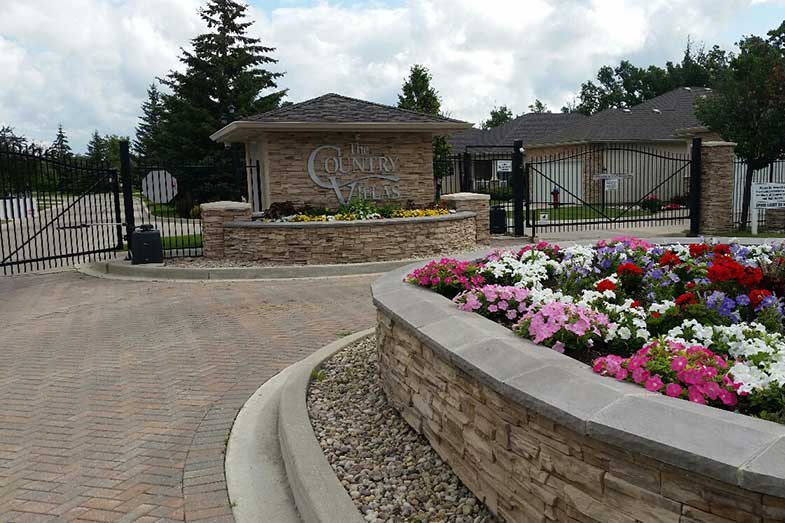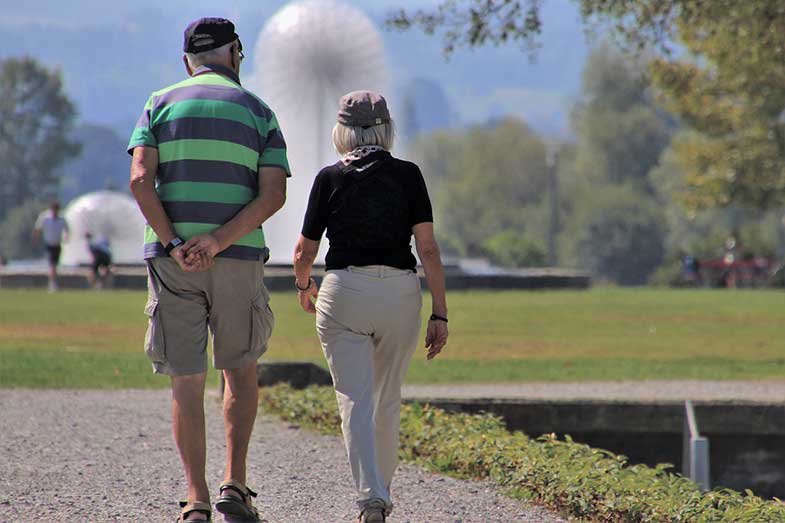Moving to a gated community has numerous benefits, including safety and peace of mind. It also provides an extra layer of comfort for those who live alone.
What is a gated community? A gated community is a neighborhood with controlled access that uses one or more gates for residents or visitors to pass through. It is a desirable security amenity to prospective residents.
If you are looking for the perfect home to move into, a gated retirement community is an option you might want to consider. Let’s look into the gated community meaning.

What Is a Gated Community? (For Retirees)
So, what is a gated community, and what sets it apart from other retirement communities? Read on to learn what a gated retirement community is, the different types of gated communities, the advantages of choosing to live in one, and the things you will need to consider before making a decision.
Now, specifically for retirees, what are gated communities? Gated retirement communities are residential communities designed for older adults who want to live in a secure, maintenance-free environment. Most gated community homes are age-restricted to a minimum age of 55. These are often referred to as over 55 gated communities. Restricting the age to retirees 55 and above is one factor that appeals to prospective residents. It allows them to relax in a quiet environment where they can socialize with others within the same age bracket.
Most retirement communities are for seniors who can live independently and do not need assistance in performing their day-to-day routines. However, there are also assisted living facilities that provide some assistance with daily living activities.
How Do Gated Communities Work?

It depends. There are three types of gated retirement communities, and how they operate and the level of security they provide varies. Let’s go over each one:
Automatic Security Gates
Retirement communities with automatic security gates are the most common type of gated communities. Compared to other types of gated communities, communities with automatic security gates are cost-effective and easy to operate but have some security drawbacks.
Automatic gates open by pressing a button on a garage door remote that is programmed to work with the gate. These gates also have a call box residents can use to provide access to visitors, mail carriers, and service personnel. The call box has a list of each resident that visitors can search for and then call. The resident will have to enter a designated code on their phone to open the gate and allow entry.
If the resident needs access but does not have their remote, they can enter a code to open the gate. Residents often share this code with their family, friends, and service personnel, which compromises community security. To address this, retirement communities install security cameras to monitor the gates and add another layer of security.
Guard Gated Communities
Guard gated communities provide a higher level of security than automatic gated communities, but they are also more expensive. Typically, there is a guard shack with a gate attendant, either a hired professional or a resident.
Most guard-gated communities have two lanes entering the community – one for residents and one for non-residents. Residents may open the gate by the following:
- Entering a code on a call box
- Using an electronic card
- Using a remote control
The gate attendant may also open the gate for the residents once they have verified a specific sticker on their windshield.
For non-residents entering the community, permission is limited to visitors or service personnel that the residents expect. Residents need to inform the gate attendant beforehand; otherwise, they will not be allowed into the community.
Guard Gated Communities with Roving Patrols
Guard gated retirement communities with roving patrols offer the highest level of security but are also the most expensive. In addition to the guard gates, these communities have roving patrols that perform several valuable functions.
First, these roving patrols drive around the community, looking for anything that appears suspicious or out of place. They do periodic house checks when residents are gone for extended periods, checking to make sure the house is secure, and everything is in order. Roving patrols also help residents with things like flat tires or dead batteries. And lastly, they help visitors navigate within the community.
Advantages of Living in a Gated Retirement Community

There are many advantages to living in a gated retirement community:
- Safety and Security
- Independence
- Privacy
- Sense of Community
- Build Quality
- Scenic Landscape
- Low Maintenance Living
Safety and Security
For most prospective tenants, safety and security are the most important benefits of retiring to a gated community. “Are gated communities statistically safer?” is one of the most asked questions. And while having a gate is not a foolproof deterrent to crimes, knowing that only residents and people who have been invited in can enter gives them peace of mind.
Independence
Many newly retired parents find themselves in a house that’s too big for them to live in and maintain. Living in a gated community allows retirees to downsize and live in a home designed with their needs in mind.
Privacy
Living in a gated community also means more privacy than a residential home. You won’t have to worry about passing traffic, too much noise, or unwanted guests such as salespeople.
Sense of Community
In your new home in a gated retirement residence, you will be part of a community of people within the same age range who, like you, are free from work commitments and are looking to socialize. And since they have chosen the same post-retirement route as you, you will likely share similar interests.
Build Quality
Downsizing does not mean you’ll have to settle in terms of the quality of your dwelling. When you visit a gated retirement community, you will be pleasantly surprised to see that the residential units are of much higher quality than regular houses, particularly older or ‘period’ properties. As such, these homes will require a lot less in the way of upkeep – leaving you free to spend your free time in pursuit of new hobbies, socializing, or travel.
Scenic Landscape
One feature of a gated community is the resort-type landscaping, offering residents a lovely setting for taking long walks or jogging outdoors. Traffic-free roads and beautiful gardens make it safer and quieter for residents to walk their pets or enjoy a sunny afternoon outside when their grandchildren come over to visit.
Low Maintenance Living
Unlike living in your old house, you will never have to worry about mowing your front lawn, calling the plumber when your kitchen sink is clogged, or looking for a contractor to repair your roof after a storm. Maintenance of shared facilities and community areas is taken care of by the community’s management team.
Things to Consider
Consider these three things when choosing to live in a gated senior community:
- Monthly Dues and Ongoing Costs
- Homeowners’ Associations
- Slower Entrance and Exit
Monthly Dues and Ongoing Costs
When moving to a gated retirement community, an important thing to consider is the overall cost of living. So you will need to ask this question: “How much does it cost to live in a gated community?” Ask about the monthly dues, what they cover, if they are likely to go up, and how often this will happen. Keep in mind that well-run homeowner associations maintain fully funded reserves to cover deferred maintenance and other costs.
Homeowners’ Associations
While homeowners’ associations have their benefits, in general, some residents may find them to be too constraining. Also, homeowners’ association fees can be quite high to cover the costs of maintaining the facilities.
Slower Entrance and Exit
Another thing you need to note is how to get into a gated community. This security measure can sometimes be a disadvantage, especially during emergencies when emergency vehicles, ambulances, or the police have to be let in because waiting for gates to open and close takes time. Also, during peak hours, you will have to wait in line to enter and exit the community.
You might be asking the following questions yourself, which are some of the common concerns of prospective gated community residents as well:
How do emergency vehicles enter gated communities?
Most retirees and their loved ones often ask this question, along with “How do ambulances get into gated communities?”. During emergencies, gated communities can allow quick access to first responders through specific lockboxes, such as KNOX or Supra emergency key boxes, which only first responders can access. Other devices work with emergency vehicles that allow them to Click-to-Enter. It activates when first responders either trigger their strobe lights or key their emergency radio, opening the gate for a period of time.
Besides ambulances, quick access is also given to the police, which answers another common concern: “How do police get into gated communities?” Both medical and law enforcement first responders are trained to operate various types of devices for opening these secured gates when the need arises, so you can rest assured that help will come in a timely manner.
How do delivery drivers get into gated communities?
Another question is related to courier personnel, such as FedEx or UPS drivers. Since residents would usually not know when these are to arrive, especially when the order was made by someone else, delivery personnel are often given master keys or access codes to get into the gated community. In some circumstances, they may need to be buzzed in by someone, either the recipient or community manager. Drivers may ring the recipient upon arrival as a courtesy.
So, the Final Question is – is a Gated Retirement Community for You or Not?
While gated retirement communities are gaining popularity, make sure to consider all the factors we have discussed above. For many, the benefits of living in a gated retirement community outweigh the drawbacks, especially since having a layer of security between your home and the rest of the world can be quite comforting.
If you would rather stay in your current home, another option is to turn your neighborhood into a gated community. Although challenging, it is possible. Read this guide on how to turn your neighborhood into a gated community and see if you have the resources to turn this plan into reality.
When trying to decide whether to live in a gated retirement community or proceed to turn your neighborhood into one, remember that the main priority in your golden years should be yourself. Let this be your guide in making your choice. Choose the route that will make you spend this time of your life in a way that will make you happy and fulfilled.
